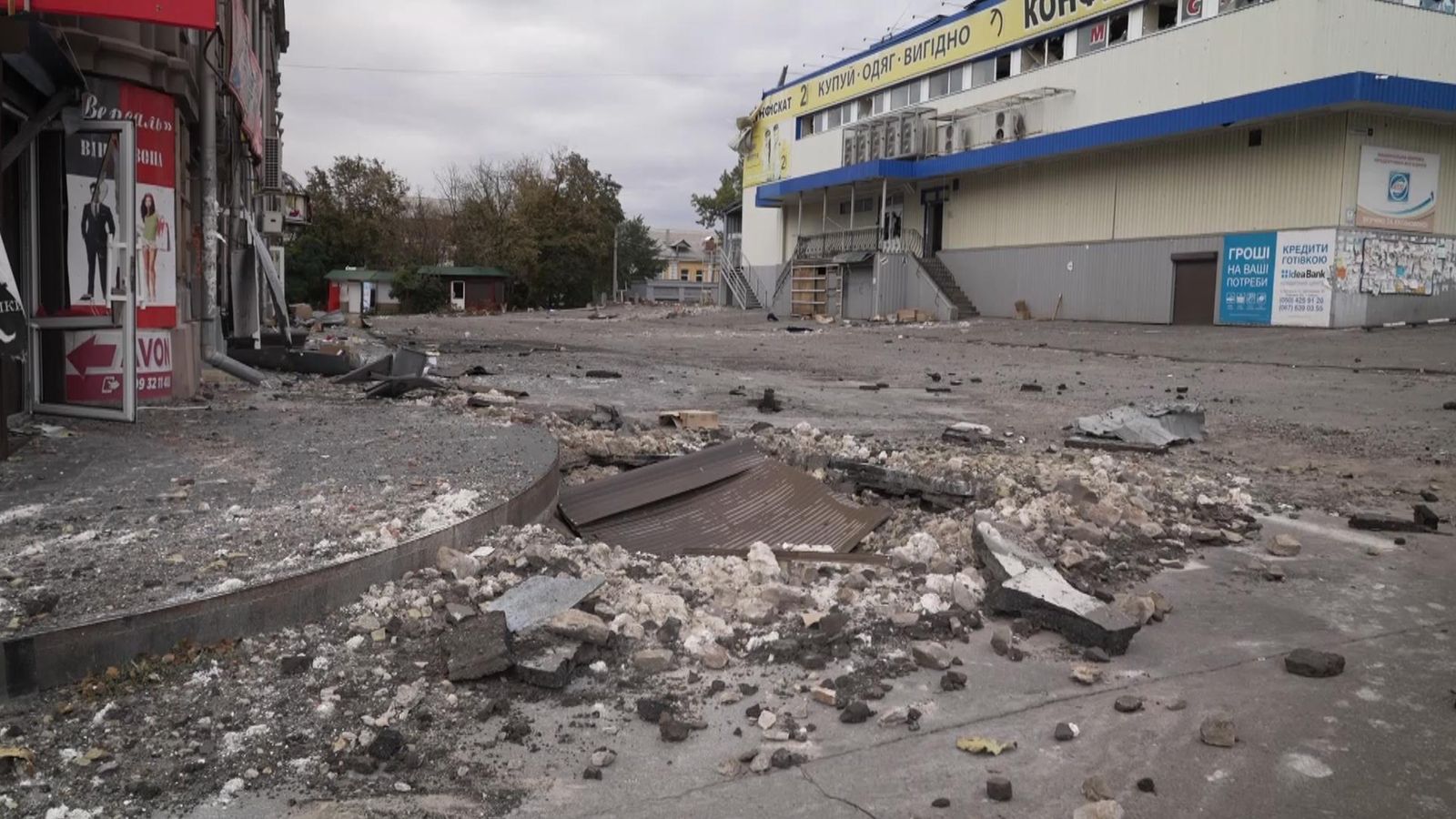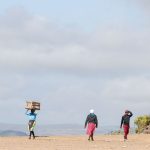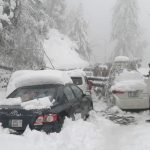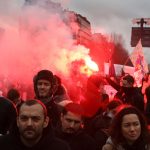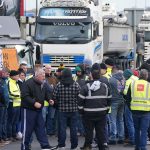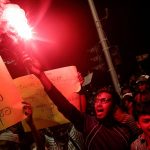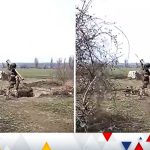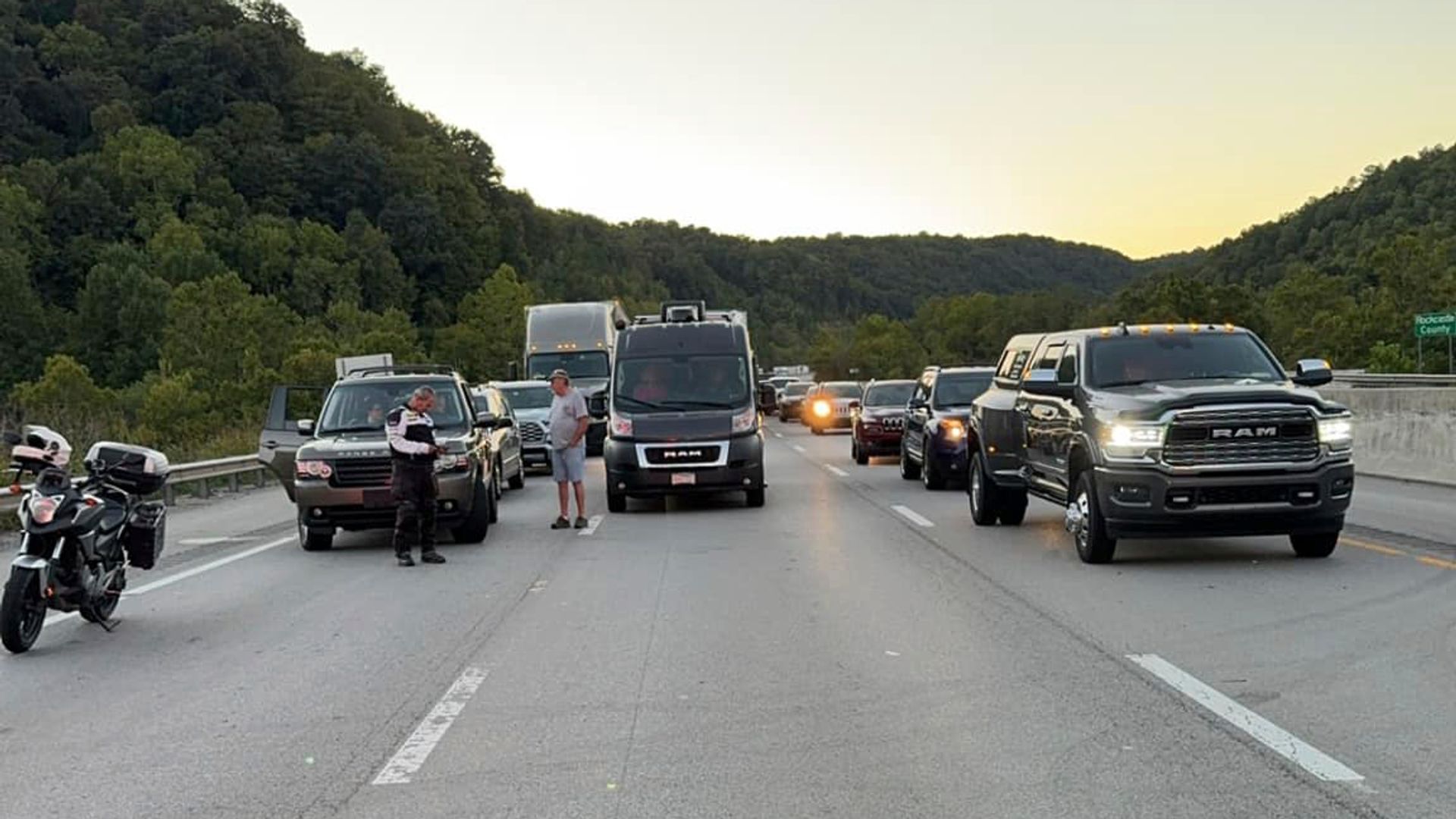The first ominous sounds of explosions could be heard on the outskirts of the city of Kupiansk.
A small line of weary residents queued up for water from a local well, each clutching a collection of plastic bottles because there is no running water or electricity.
They barely flinched as the boom of outgoing fire from the Ukrainian side reverberated around them, followed by the crack of an incoming round landing further into the city.
“It’s scary,” said one woman, Vira, 72. “Of course we are afraid.”
Putin’s mobilisation order sparks fury in Moscow – Ukraine live updates
Ukrainian forces are trying to retake this city as part of a major counter-offensive in the northeastern Kharkiv region that has recaptured swathes of land from Russian control.
But unlike other newly liberated areas such as the city of Izyum and the large town of Balakliya, Russian forces are not giving up Kupiansk without a fight.
Ukraine: More than 1,300 arrested after Putin’s mobilisation announcement sparks protests across Russia
Freed ‘by the skin of our teeth’: British POWs detained by Russian-backed separatists have been released
Alisher Usmanov: Police raid villas tied to former Arsenal FC shareholder amid money-laundering probe
It has turned the city into a frontline, with Russia shelling Ukrainian positions, seemingly from outside the eastern perimeter, and Ukraine using return fire to push them further back.
The centre of Kupiansk looks and sounds like a war zone, with buildings burnt and smashed, twisted metal and chunks of concrete littering the streets and the few local people wandering around having to contend with the fairly regular thud of incoming and outgoing fire.
Two women emerged from the basement of one building onto a shattered street.
One of them agreed to speak. She was visibly angry and blamed the Ukrainian side for the destruction, without a mention of the role Russian forces played – an indication perhaps of how not everyone in the city opposed Russia’s months-long occupation.
“How are we living? Just take a look. No jobs, no money, nothing,” she said, waving her arms at the devastation.
“Nothing to eat, no electricity, no water, no gas. I haven’t washed my hair for two weeks.”
The woman, sarcastically, added: “How are we living? We used to dream about this life all our lives… It sucks.”
Ukraine’s operation to reclaim all parts of the Kharkiv region under Russian control officially began on 6 September, targeting Russian positions in occupied areas.
Kupiansk is a railway hub, with tracks leading southeast to the Donbas – a core focus of the Russian invasion – and also into Russia.
Control of the city had given Russian forces the ability to resupply more easily frontline forces in Donetsk and Luhansk regions, which comprise the Donbas.
It made reclaiming the place all the more important, strategically, for the Ukrainians.
Residents in Kupiansk talked about the 9 to 12 September period being particularly “loud and scary” in their city as the Ukrainians attacked.
“There was a lot of shelling from the Ukrainian side, jets were flying,” said Olena Dmitrieva, 55, who lives in an apartment block on a grassy, raised area on the edge of the city, but with a view of the centre.
“I live on the fourth floor and these jets, explosions, it was like hell. Our building was shaking… We thought it might collapse now.”
She said her children and grandchildren live on the eastern side of Kupiansk, closer to the Russian lines, and it was not possible for her to visit them.
“God, why are we being punished like this?” she asked, weeping.
The governor of the Kharkiv region said Russian shelling in Kupiansk on Wednesday had injured five people, including a 13-year-old boy.
Despite the active combat, Ukrainian police and prosecutors are already on the ground in the city, gathering evidence of suspected Russian war crimes during the occupation.
Oleksandr Sirenko, Kupiansk’s deputy prosecutor, visited the main police station on Wednesday.
A Russian flag was strewn on the ground by the entrance, along with a shattered Russian police sign – indicators of who had been using the building.
Inside, there was a sinister-looking painting on a wall of a letter “Z” – an emblem of the occupation.
Investigators were picking through a number of grimy cells where people appeared to have been detained in cramped, dirty conditions. There was also a room thought to have been used for interrogations where forensic experts were gathering DNA samples.
All the while, they had to be alert to the threat of Russian attacks.
We were told to seek cover if we heard the buzz of a drone as it could well be a Russian one, looking for targets on the ground for artillery guns to strike.
“It is hard,” the deputy prosecutor said, about having to work in a war zone.
“But harder than being near the frontline is being without electricity and lights. It complicates our investigation. But we are collecting evidence about how Russia treated people. This is where there used to be aggression.”
